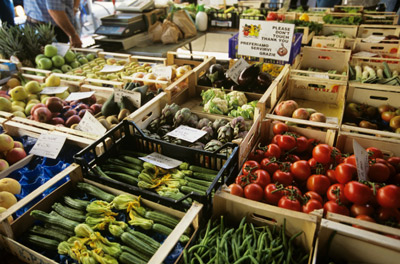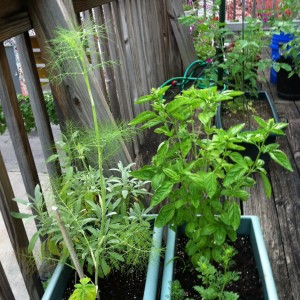
I Got 99 Problems But Going Local Ain’t One!
 I recently received an invite to attend an evening sold as a “conversation” about the local food movement. (Disclaimer #1: Specifics withheld:My intention is not to embarrass any individuals, but to discuss my frustration from this experience.) Since I’ve been screaming ‘GO LOCAL” on GPB for the past few months, I felt like I wanted to rejuvenate my feelings on the topic and get some new insight.
I recently received an invite to attend an evening sold as a “conversation” about the local food movement. (Disclaimer #1: Specifics withheld:My intention is not to embarrass any individuals, but to discuss my frustration from this experience.) Since I’ve been screaming ‘GO LOCAL” on GPB for the past few months, I felt like I wanted to rejuvenate my feelings on the topic and get some new insight.
Unfortunately, I was very disappointed.
The format of the discussion was pretty straight forward: Young woman “expert” wrote a thesis, presented a PowerPoint with a few short clips (including Food Inc. & Freakanomics), followed by discussion.
The most frustrating part of the evening was the presenter’s arguments against the local food movement. (Disclaimer #2: I’ve read a book pro-locavore and anti-locavore.) Although I love a good debate, I felt that many of her anti-locavore arguments weren’t well explained. Therefore, I’ve analyzed a few of the “Going local isn’t all it’s cracked up to be” arguments:
Urban gardening increases urban sprawl. One argument against planning many urban gardens is that they can ‘spread out’ the city. Urban areas are conducive to social interactions & innovative ideas because people are so (physically) close, yet urban sprawl can prohibit it. OK, I realize that this argument may have been valid in the 1600s. However, in 2012, we overshare our thoughts with Twitter, Pics with Instagram, and “Friend” people we meet at a bar with our trendy iPhones. (Guilty as charged.) Worried about people meeting in person? Those dorks (like me) connected with social media can still make friends. A few weeks ago I was totally involved in my photo editing at my neighborhood coffeeshop and met a new friend. Want to meet some new people interested in chess or raw diets? Find a Meetup, Happy Hour or discussion using my friends Google & MacBook.
We should “ask” local community members and engage them in conversation VS telling them what to do. While I agree you shouldn’t ever “tell” someone what to do, and there’s a polite way to do so, this is also called “common courtesy”. Yet, the USDA & factory farm marketing have mislead consumers for the past 50+ years about what they’re ingesting. Wouldn’t it be more immoral to allow people to keep eating such crap and not educate them?

The Local Food Movement won’t solve World Hunger. I partially do agree with this statement. We can’t expect to go from our current food system to having everyone become a locavore overnight. Yet, locavores aren’t often trying to solve World Hunger overnight. If you think about the pre-colonization years, each land was ideal to grow specific foods. If we eat what we can grow (vs try to grow what we prefer), we can reap more harvest and feed more people. Eventually, we can get back to eating more locally. And slowly, that would probably help solve world hunger.
Big farms may not have the best practices, but they fill a need. Factory farms do “fill” a need, but much of the subsidies fill the wrong kinds of needs. Not sure what I mean? Just Google “Monsanto”.
Smaller Farms could have a larger carbon footprint than larger (Factory) farms. While the specific study was not referenced, the idea is that 1 small truck carrying produce 100 miles may give less of a carbon footprint that a boatload of produce from Peru. There’s 2 explanations for this:
- The local farm may be growing something offseason (ex: grapes in PA in the fall/winter using greenhouses, heat lamps, etc) and adding in their carbon footprint for gasoline. The larger farm in Peru may be growing grapes in season (without pesticides/extra energy) and shipping VIA boat may have less of an energy use than the local farm. This is a quite valid point, and accurate statement.
- However, the small farm should be growing things IN season. We’ve grown accustom to grocery stores carrying grapes, tomatoes & produce 365 days per year and have forgotten the ‘seasons’ concept. If smaller (local) farms are growing the best in-seasoned goods, it makes the carbon footprint way smaller. Win-win.
We’ve gotten ‘used’ to Factory Farms – We can’t change that overnight. Right, but everything evolves over time. Can’t we revert back to how the ‘good ol’ days’ were?
Community Members in (1) Philadelphia neighborhood DON’T want more community gardens. This was quite an interesting point to me… The young woman presenting mentioned that when she visited a specific neighborhood, she was surveying the neighbors for what they wanted. Their response? “No more community gardens!” I did inquire if the neighbors were a) educated about what was growing and b) if they were able to participate/be employed by the community gardens. While the speaker was not sure of those answers, I’d assume that the neighbors weren’t being educated with what was being grown and how they could use it. Sure, Kale and Swiss Chard aren’t on the average American’s shopping list. But educating neighbors about nutrition & cooking is as equally important as introducing new (healthy) foods.
Unfortunately we’ve become a society used to convenience and easy disposal. While the local food movement can’t solve issues like these, the water crisis or overpopulation, it has much potential to help feed people healthier and with a smaller carbon footprint.
Overall, I look forward to continuing the locavore conversation with my friends, family & community members. Readers, what have been your impressions of the local food movement?
Photos: TLC, GPB









